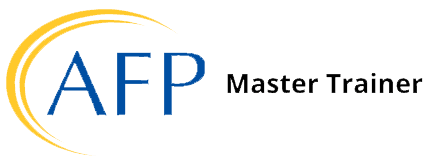Nonprofit Strategic Planning
Invoke helps organizations create clear, actionable strategies through data collection, goal setting, stakeholder engagement, and implementation planning — providing a roadmap for ambitious yet achievable success. Our strategic planning includes ongoing support for one year.

Nonprofit Strategic Planning Testimonials
“Ivy Buchan did an outstanding job helping our organization develop our Strategic Plan and brought our Board of Directors together in a collaborative way so that we were all excited to focus and participate. Additionally, she led Board Governance discussions and helped us define our committee structure. She offered fresh and objective perspectives and suggested actionable next steps and recommendations. She is professional and has a wealth of knowledge and experience in nonprofit management, fundraising, strategic planning, and more. We highly recommend Ivy to other nonprofit leaders and would welcome the opportunity to work with her again.”
~ Maddie Young, President & CEO, YWCA Carlisle & Cumberland County
“Ivy Buchan was just what the Harrisburg Symphony Association needed. Her knowledge of nonprofit structure and governance, combined with her deep roots in Harrisburg make her an ideal thought partner. In one mid-scale planning session, she was able to bring our board together quickly and lead us to strategic initiatives in a thorough and enjoyable manner. Ivy and her team are exemplary, and a joy to work with and we highly recommend them.”
~ Matthew Herren, Executive Director, Harrisburg Symphony Association
Why Strategic Planning Matters for Nonprofit Organizations
Strategic planning is crucial for nonprofit organizations to navigate complex environments and achieve their missions.
It involves developing a clear vision, setting goals, and creating actionable plans to guide decision-making and resource allocation.
Research shows that strategic planning significantly enhances nonprofit effectiveness:
- 86% of nonprofits report that having a strategic plan positively impacts revenue generation
- 36-45% of annual revenue is attributed to the presence of a strategic plan
- Organizations that regularly review and measure their strategic plans are six times more likely to generate revenue.
Common Challenges in Strategic Planning
Ivy will partner with you to address any obstacles that may arise in completing a comprehensive strategic plan.
1. Lack of Stakeholder Engagement
-
Challenge: Determining the appropriate type and amount of involvement by the nonprofit's multiple stakeholder groups, such as board members, staff, volunteers, and beneficiaries. This lack of inclusion often results in plans that lack buy-in and fail to address the needs of those most affected by the organization's work.
-
Impact: Plans developed in isolation are less actionable and may not reflect diverse perspectives or community needs.
-
Solution: Conduct regular consultations, focus groups, and feedback sessions to ensure broad participation and ownership of the strategic plan.
2. Insufficient Data Collection and Analysis
-
Challenge: Nonprofits may be relying on incomplete or inaccurate data when developing their plans. Without a clear understanding of internal operations and the external environment, strategic decisions can be misguided.
-
Impact: Poor data leads to unrealistic or irrelevant goals, reducing the effectiveness of the plan.
-
Solution: Invest in thorough data collection methods such as SWOT/SOAR analysis, financial reviews, and stakeholder surveys to create a solid foundation for decision-making.
3. Unrealistic or Overly Ambitious Goals
-
Challenge: Setting goals that are too ambitious or unattainable can overwhelm staff and lead to frustration when progress is not achieved.
-
Impact: Unrealistic expectations reduce morale and make plans difficult to implement.
-
Solution: Use SMART criteria (Specific, Measurable, Achievable, Relevant, Time-bound) to set realistic objectives that align with organizational capacity.
4. Lack of Flexibility
-
Challenge: Many nonprofits create rigid plans that fail to adapt to changing circumstances or external challenges.
-
Impact: Static plans quickly become obsolete in dynamic environments, limiting an organization’s ability to respond effectively.
-
Solution: Build flexibility into the planning process by scheduling regular reviews and updates based on new information or shifts in priorities.
5. Resource Constraints
-
Challenge: Strategic planning can be time-consuming and costly. Small nonprofits often lack the financial and human resources needed for effective planning.
-
Impact: Limited resources result in superficial plans that do not address core challenges or opportunities.
-
Solution: Simplify the planning process by adopting user-friendly models tailored for resource-constrained organizations.
6. Failure to Engage the Community
-
Challenge: Traditional approaches often overlook meaningful community engagement. This leads to strategies that do not align with the needs of beneficiaries or the populations served.
-
Impact: Plans miss critical insights from those most affected by the nonprofit's work, reducing their relevance and impact.
-
Solution: Incorporate intentional processes for community involvement during all stages of strategic planning.
7. Generic or Non-Specific Plans
-
Challenge: Some nonprofits develop generic plans without clear priorities or actionable steps. These plans often lack focus and fail to guide day-to-day operations effectively.
-
Impact: A lack of specificity leads to confusion among staff and stakeholders about how to implement the plan.
-
Solution: Develop detailed action steps tied directly to measurable outcomes and organizational goals.
How to Measure and Evaluate Strategic Planning
Ivy will partner with you to design an approach that drives meaningful results for your organization.
1. Establish Key Performance Indicators (KPIs)
-
Definition: KPIs are quantifiable metrics that align with the nonprofit’s strategic goals.
-
Examples:
-
For a literacy-focused nonprofit: Number of students enrolled, improvement in reading levels, and program completion rates.
-
For a youth mentorship program: Increase in mentees served by 25% within two years.
-
-
Benefits: KPIs provide precise measures of progress, allowing nonprofits to track success and identify areas needing attention.
2. Utilize Logic Models
-
Definition: Logic models visually map the relationship between resources, activities, outputs, and outcomes.
-
Examples: A youth development nonprofit might use a logic model to connect funding and educational materials to improved academic performance and reduced dropout rates.
-
Benefits: They offer a clear framework for planning and evaluating programs while ensuring alignment with strategic objectives.
3. Conduct Regular Data Collection
-
Methods:
-
Surveys of beneficiaries, staff, and stakeholders.
-
Financial reviews and program participation metrics.
-
Real-time tracking tools like dashboards.
-
-
Timing: Monthly or quarterly reviews ensure continuous monitoring of progress.
-
Benefits: Systematic data collection allows for real-time adjustments to strategies, enhancing program effectiveness.
4. Implement Evaluation Frameworks
Nonprofits can choose from various frameworks based on their needs:
-
Balanced Scorecard: Evaluates performance across financial, customer satisfaction, internal processes, and learning/growth perspectives.
-
SWOT Analysis: Assesses organizational strengths, weaknesses, opportunities, and threats to refine strategic priorities. SOAR is another good option.
-
PESTEL Analysis: Analyzes external factors like political or economic trends affecting the nonprofit’s strategy.
5. Measure Impact
-
Definition: Compare actual outcomes against strategic goals to assess the effectiveness of initiatives.
-
Examples:
-
A health-focused nonprofit might evaluate screening rates against campaign targets.
-
An environmental nonprofit could measure reforestation project success by the number of trees planted and survival rates.
-
-
Benefits: Impact evaluation ensures programs are making a tangible difference in communities served.
6. Promote Accountability
-
Nonprofits should consider how to stay transparent with stakeholders (donors, beneficiaries, board members), possibly producing regular reports on strategic plan outcomes.
-
Example: Monthly progress reports reviewed in staff meetings help ensure all team members understand achievements and challenges.
7. Foster Continuous Learning
-
Regular evaluations encourage evidence-based improvements by identifying gaps between desired outcomes and actual results.
-
Example: Quarterly outreach program evaluations inform staff training sessions for better service delivery.
How We Customize Nonprofit Strategic Planning
Ivy will guide nonprofits through the strategic planning process, offering:
- Customized planning approaches tailored to your organization's needs
- Expertise in nonprofit sector trends and best practices
- Facilitation of stakeholder engagement and consensus-building
- Support in developing actionable, measurable plans
By investing in professional strategic planning services, your nonprofit can enhance its impact, improve fundraising success, and build a stronger foundation for long-term sustainability.
Ready to Elevate Your Nonprofit's Strategy?
Contact us today to help create a customized strategic plan for your nonprofit. Invoke can help align stakeholder visions, engage the community, and deliver a strategic plan that will help further your nonprofit's mission.




